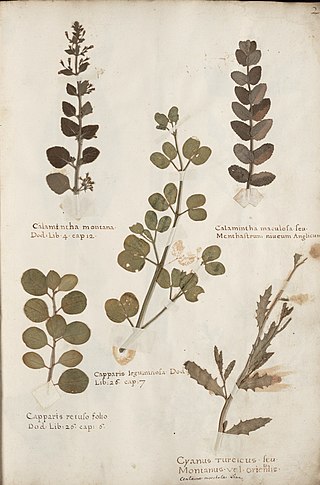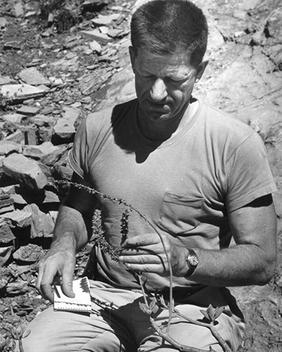Participating institutions
Sixteen botanic gardens have agreed to participate in two phases to develop, test and implement the project. The institutions are:
The project is funded by a National Leadership grant from the Institute of Museum and Library Services (IMLS) The collaboration is led by the Chicago Botanic Garden, the University of Kansas Biodiversity Research Center and Natural History Museum and the North American Plant Collections Consortium of the American Public Gardens Association (APGA) .
BG-Base, a manufacturer of proprietary software applications for the botanic garden community, has created an export module for participants utilizing their software applications.
The software applications to be utilized include Web Applications for the Semantic Architecture of Biodiversity Information (WASABI) - an advanced generation Distributed Generic Information Retrieval (DiGIR) - for the data provider and portal, Google Maps for maps and MorphBank for images.
The intended data users were surveyed, and feedback from the eight audiences comprising curators, taxonomists, educators, horticulturists, ecologists, weed scientists, conservation scientists and gardeners defined the 161 fields found in the federated schema.
Deliverables of the project include a federated schema, improved website for the APGA, development of software applications, servers for each institution and training of staff at each institution.

Royal Botanic Gardens, Kew is a non-departmental public body in the United Kingdom sponsored by the Department for Environment, Food and Rural Affairs. An internationally important botanical research and education institution, it employs 1,100 staff. Its board of trustees is chaired by Dame Amelia Fawcett.

A botanical garden or botanic garden is a garden with a documented collection of living plants for the purpose of scientific research, conservation, display, and education. Typically plants are labelled with their botanical names. It may contain specialist plant collections such as cacti and other succulent plants, herb gardens, plants from particular parts of the world, and so on; there may be greenhouses, shadehouses, again with special collections such as tropical plants, alpine plants, or other exotic plants. Most are at least partly open to the public, and may offer guided tours, educational displays, art exhibitions, book rooms, open-air theatrical and musical performances, and other entertainment.

A herbarium is a collection of preserved plant specimens and associated data used for scientific study.
Royal Botanical Gardens (RBG) is headquartered in Burlington owning extensive environmental protection areas, historic sites and culturally relevant gardens in Hamilton, Ontario, Canada. It is one of the major tourist attractions between Niagara Falls and Toronto, as well as a significant local and regional horticultural, education, conservation, and scientific resource. The mandate is derived by a Provincial Act of 1941 centred on human interaction with the natural world and protection of environmentally significant lands that form the western tip of Lake Ontario. Royal Botanical Gardens spans an area of about 10 km by 4 km, dominated by two coastal wetlands, and glacial-carved landscapes that extend from the lake up to the Niagara Escarpment plateau. The various gardens and natural areas are accessed through nine public entrance locations. It is one of several Prescribed Public Bodies listed under the Ontario Heritage Act.

The Arnold Arboretum of Harvard University is a botanical research institution and free public park, located in the Jamaica Plain and Roslindale neighborhoods of Boston, Massachusetts. Established in 1872, it is the oldest public arboretum in North America. The landscape was designed by Charles Sprague Sargent and Frederick Law Olmsted and is the second largest "link" in the Emerald Necklace. The Arnold Arboretum's collection of temperate trees, shrubs, and vines has a particular emphasis on the plants of the eastern United States and eastern Asia, where arboretum staff and colleagues are actively sourcing new material on plant collecting expeditions. The arboretum supports research in its landscape and in its Weld Hill Research Building.

The Donald E. Davis Arboretum, in Auburn, Alabama, United States, is a public native plants museum, and botanical arboretum with educational facilities, event spaces, and a conservation program. Its grounds, covering 13.5 acres of Auburn University's campus, include cataloged living collections of associated tree and plant communities representative of Alabama's ecosystems, among which is mixed oak forest, carnivorous bog, and longleaf pine savanna. The living collections include more than 1,000 plant types, including 500 different plant species, with over 3,000 cataloged specimens. The Arboretum contains over a mile (2 km) of interwoven walking trails that meander through various southeastern biotopes.
Sir Peter Crane, FRS is the current President of the Oak Spring Garden Foundation and Senior Research Scientist in the School of Forestry and Environmental Studies at Yale University. In addition to his work in leading and developing educational and natural history organizations, including the Field Museum in Chicago and the Royal Botanic Gardens, Kew, he has had a long career as a professor and researcher in both the U.K. and the United States. He is best known for his work on the origin and early evolution of flowering plants (angiosperms) based on studies of the plant fossil record. His popular writing includes Ginkgo: The Tree That Time Forgot, a book that traces the evolution and cultural history of Ginkgo biloba to the present day.

The Morton Arboretum, in Lisle, Illinois, United States, is a public garden, and outdoor museum with a library, herbarium, and program in tree research including the Center for Tree Science. Its grounds, covering 1,700 acres, include cataloged collections of trees and other living plants, gardens, and restored areas, among which is a restored tallgrass prairie. The living collections include more than 4,100 different plant species. There are more than 200,000 cataloged plants.

The Chicago Botanic Garden is a 385-acre (156 ha) living plant museum situated on nine islands in the Cook County Forest Preserves. It features 27 display gardens in four natural habitats: McDonald Woods, Dixon Prairie, Skokie River Corridor, and Lakes and Shores. The garden is open every day of the year. An admission fee has been approved to start in 2022, not to exceed $35.
The Plant Collections Network (PCN) is a group of North American botanical gardens and arboreta that coordinates a continent-wide approach to plant germplasm preservation, and promotes excellence in plant collections management. The program is administered by the American Public Gardens Association from its headquarters in Kennett Square, Pennsylvania, in collaboration with the USDA Agricultural Research Service.

"Jawaharlal Nehru Tropical Botanic Garden and Research Institute", renamed in the fond memory of visionary Prime Minister of India Shri Pandit Jawaharlal Nehru is an autonomous Institute established by the Government of Kerala on 17 November 1979 at Thiruvananthapuram, the capital city of Kerala. It functions under the umbrella of the Kerala State Council for Science, Technology and Environment (KSCSTE), Government of Kerala. The Royal Botanic Gardens (RBG), Kew played an exemplary and significant role in shaping and designing the lay out of the JNTBGRI garden in its formative stages.
The conservation and restoration of new media art is the study and practice of techniques for sustaining new media art created using from materials such as digital, biological, performative, and other variable media.

The San Juan Botanical Garden, officially known as the Botanical Garden of the University of Puerto Rico, is located in the Caribbean city of San Juan, capital of Puerto Rico. This lush 300-acre (1.2 km2) “urban garden” of native and exotic flora serves as a laboratory for the study, conservation and enrichment of plants, trees, flowers, grasses and many other plants. Seventy-five acres are landscaped and open to the general public as well as researchers.
The American Public Gardens Association, formerly the American Association of Botanical Gardens and Arboreta, is an association of public-garden institutions and professionals primarily in the United States and Canada. Over the last six decades, the American Public Gardens Association has emerged as the premiere association for public gardens in North America. Today, the Association's 500 member institutions are located in all 50 states, the District of Columbia, Canada and fourteen other countries. The Association's individual members live in every state, the District of Columbia, Canada, and 24 other countries.
The Seed Herbarium Image Project (SHIP), is an initiative of the Arnold Arboretum of Harvard University to create a web-based repository of high-resolution digital images documenting the morphology of woody plant seeds and selected fruit structures. Headquartered at the Arboretum’s Dana Greenhouse facility and coordinated and photographed by curatorial assistant Julie McIntosh Shapiro, the Seed Herbarium Image Project supports the work of educators and professionals in horticulture and the botanical sciences, particularly in conservation research and management of rare and endangered species. The digitized images of seeds offer an important new aid for teaching seed identification—a fundamental skill in plant propagation, hybridization, and distribution—and serve as a resource for nurserymen, horticulturists, botanical curators, taxonomists, ecologists, and the general public. SHIP also provides an online resource for botanical institutions and nurseries to verify their collections and inventories. SHIP is made possible through the generous support of the Stanley Smith Horticultural Trust, Cabot Family Charitable Trust, and the J. Frank Schmidt Family Charitable Foundation.

Kunming Institute of Botany, or KIB, founded in 1938, is a research institution in the field of Botany, which is located in Kunming, the capital of Yunnan Province, China.

The Cheadle Center for Biodiversity and Ecological Restoration (CCBER) is a research center under the Office of Research at the University of California, Santa Barbara (UCSB) whose mission is to preserve regional biodiversity and restore ecosystems on campus lands. CCBER has three main functions: curation and preservation of natural history collections, native coastal ecosystem and habitat restoration on campus lands, and education and outreach for both UCSB students and local community schools.

Reid Venable Moran was an American botanist and the curator of botany at the San Diego Natural History Museum from 1957 to 1982.
The South African National Biodiversity Institute (SANBI) is an organisation established in 2004 in terms of the National Environmental Management: Biodiversity Act, No 10 of 2004, under the South African Department of Environmental Affairs, tasked with research and dissemination of information on biodiversity, and legally mandated to contribute to the management of the country’s biodiversity resources.
Walter John Emil Kress is an American botanist and the vice-president for science at the National Museum of Natural History. He currently holds the appointment (2010) as the Director of the Consortium for Understanding and Sustaining a Biodiverse Planet at the Smithsonian and is the former Executive Director of the Association for Tropical Biology and Conservation.











